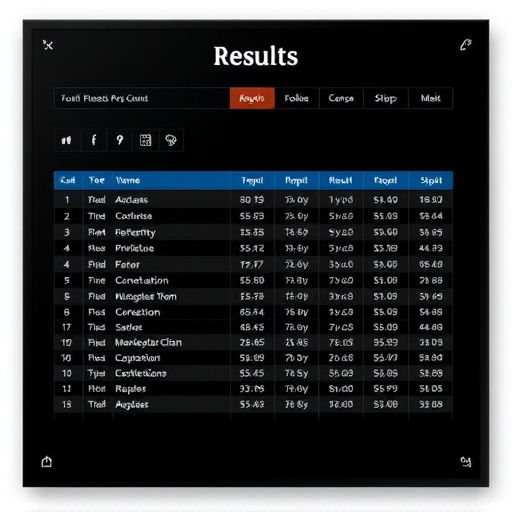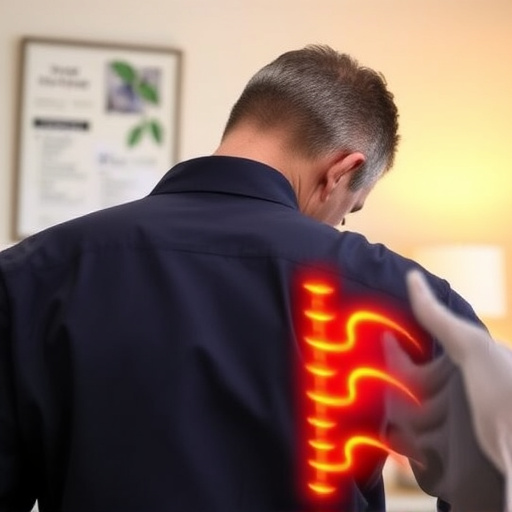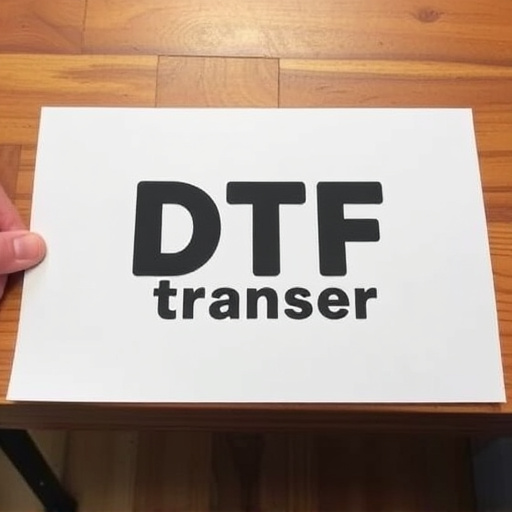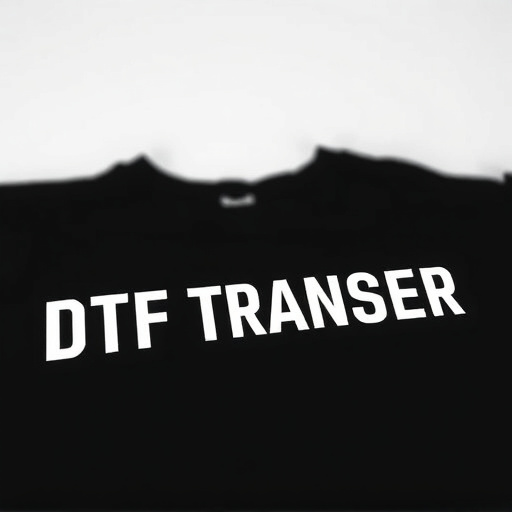DTF (Direct-To-Film) prints revolutionize printing by applying ink directly to film, enabling instant transfer to various surfaces with no cooling time. This technology is ideal for dynamic industries requiring quick turnaround times and offers DIY enthusiasts easy application and removal of warm transfers without residue. DTG (Direct-to-Fabric) prints using this method boast superior quality, vibrant colors, and a smoother finish, minimizing imperfections and preserving surface integrity. DTF prints are versatile, suitable for clothing, fabrics, wood, and metal, and can reproduce intricate patterns. Their application extends to manufacturing, packaging, food labeling, and promotional events, enhancing efficiency without damaging product quality. Successful warm transfers require meticulous preparation, appropriate materials, skilled staff, and precise application techniques.
“Discover the revolutionary world of DTF (Direct to Fabric) prints, a game-changer in the printing industry. This article explores the unique aspect of transfers designed for warm removal, offering a seamless and efficient process.
Learn about the benefits of choosing removable DTF prints, from their versatile applications to the key features ensuring top-quality results. We’ll guide you through understanding these prints, implementing best practices, and unlocking the potential of this innovative technique in various sectors.”
- Understanding DTF Prints: A Quick Overview
- Why Consider Remove-able Transfers?
- Benefits of Warm Removal Technique
- Key Features of Quality DTF Prints
- Practical Applications and Use Cases
- Best Practices for Effective Implementation
Understanding DTF Prints: A Quick Overview

DTF Prints, short for “Direct-To-Film,” is a cutting-edge transfer technology designed for ease and flexibility. Unlike traditional printing methods that require cooling or setting time, DTF prints are intended to be removed while still warm, offering a swift and efficient process. This innovative technique involves applying ink directly onto a film, which is then transferred onto various surfaces, such as textiles, plastics, or metals, without the need for lengthy curing stages.
The key advantage of DTF Prints lies in their rapidity and versatility. As the name suggests, the printing process happens directly to a film, eliminating the need for complex setups or extended exposure times. Once printed, the films can be immediately transferred onto desired materials, making it an ideal choice for dynamic and on-demand applications. This technology is particularly popular in industries where quick turnaround times are essential, ensuring businesses can meet the demands of modern consumers efficiently and effectively.
Why Consider Remove-able Transfers?

Removing transfers while they’re still warm offers several advantages, especially for those who value versatility and convenience in their DIY projects or graphic design work. DTF (Direct to Film) prints, a popular choice among creatives, allow for easy application and removal without leaving behind any residue or damaging the underlying surface. This method is particularly appealing for temporary decorations, promotional materials, or even art installations where pieces can be easily updated or removed as needed.
By opting for remove-able transfers, users gain freedom in experimenting with different designs without long-term commitments. It’s a game-changer for businesses looking to quickly adapt their window displays or for event organizers creating eye-catching signage. Moreover, this technique ensures that surfaces remain intact, preserving their original appearance and value, which is crucial for those concerned about maintaining a professional or aesthetic standard.
Benefits of Warm Removal Technique

The warm removal technique for transfers offers several significant advantages, especially in the context of DTG printing. One of the key benefits is the preservation of print quality. By removing the transfer while it’s still warm, the ink has a chance to set properly, resulting in vibrant and long-lasting colors that don’t fade or smudge easily. This method also ensures a smooth finish, minimizing the occurrence of bubbles, wrinkles, or other imperfections that can mar the final product.
Additionally, the warmth facilitates a cleaner separation between the transfer and the substrate, reducing the risk of damaging the print surface. This is particularly crucial for delicate materials or complex designs where precise control over the removal process is essential. The warm removal technique is also more environmentally friendly, as it requires less harsh solvents or chemicals to loosen the bond, contributing to a more sustainable printing process.
Key Features of Quality DTF Prints

DTF (Direct to Forme) prints stand out for their exceptional quality and unique features, making them a favorite among professionals and enthusiasts alike. Key aspects contribute to the superior craftsmanship of DTF Prints. First, the printing process utilizes advanced technology to ensure precise color accuracy and vibrant hues, resulting in visually stunning designs that pop off the surface. The use of high-quality inks further enhances durability, ensuring the prints remain vivid even when subjected to heat during removal.
Another critical feature is the versatility of DTF Prints. These transfers can be applied to a wide range of materials, from clothing and fabrics to wooden surfaces and even metal, offering creators endless possibilities for their artistic expressions. The ability to produce detailed and intricate patterns with fine lines and subtle shades adds to the overall appeal, making DTF Prints ideal for both simple designs and complex artwork.
Practical Applications and Use Cases

In practical applications, transfers designed to be removed while still warm, often referred to as DTF (Remove While Warm) Prints, find their utility in various industries and use cases. From manufacturing to packaging, these transfers are ideal for quick and efficient labeling or branding processes. For instance, in the food industry, DTF Prints can be used to label hot products like freshly baked goods or warm beverages, ensuring a swift and seamless application without damaging the product’s quality or integrity.
In the realm of logistics and shipping, this technology streamlines the packaging process by enabling labels to be applied to hot boxes or containers directly, reducing handling time and potential damage to fragile items. Moreover, in promotional events or temporary signage, DTF Prints can be utilized for creating dynamic displays where labels need to be easily detached after use, enhancing versatility and cost-efficiency.
Best Practices for Effective Implementation

When implementing transfers intended for removal while still warm, adhering to best practices ensures optimal results with DTF Prints. Firstly, ensure proper preparation of the surface by cleaning and decontaminating it to avoid any residue or contaminants that could hinder adhesion. This step is crucial for achieving clean, precise transfers without issues.
Secondly, select suitable DTF Print materials designed for easy removal while maintaining integrity. Use recommended application techniques, including following specific timing guidelines for heating and cooling processes. Properly trained staff can ensure consistent results, minimizing errors. Remember that accurate positioning and gentle handling during removal are key to preventing damage or distortion of the transferred material.














